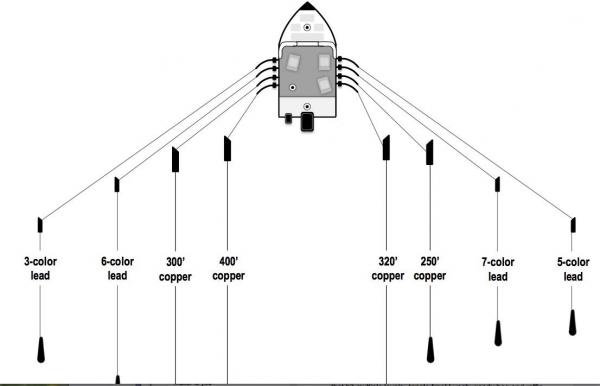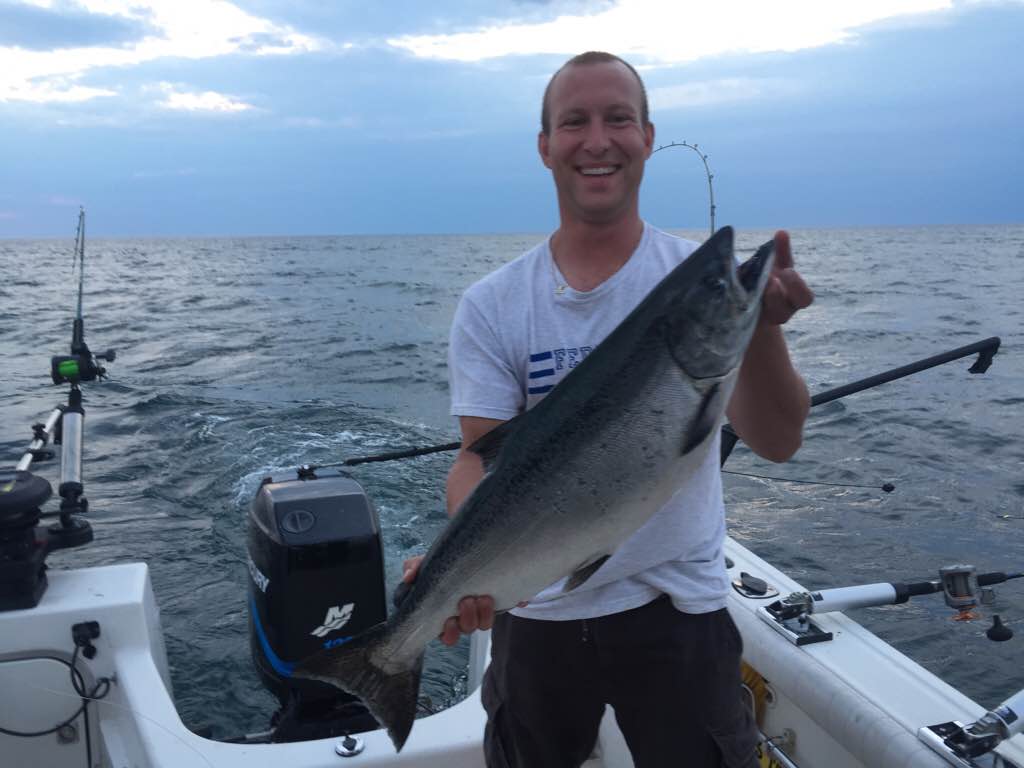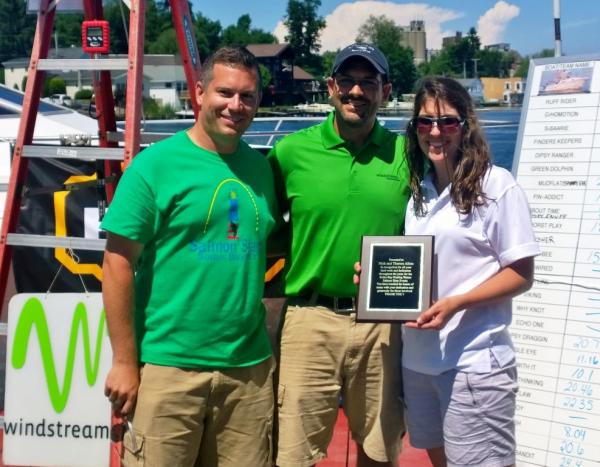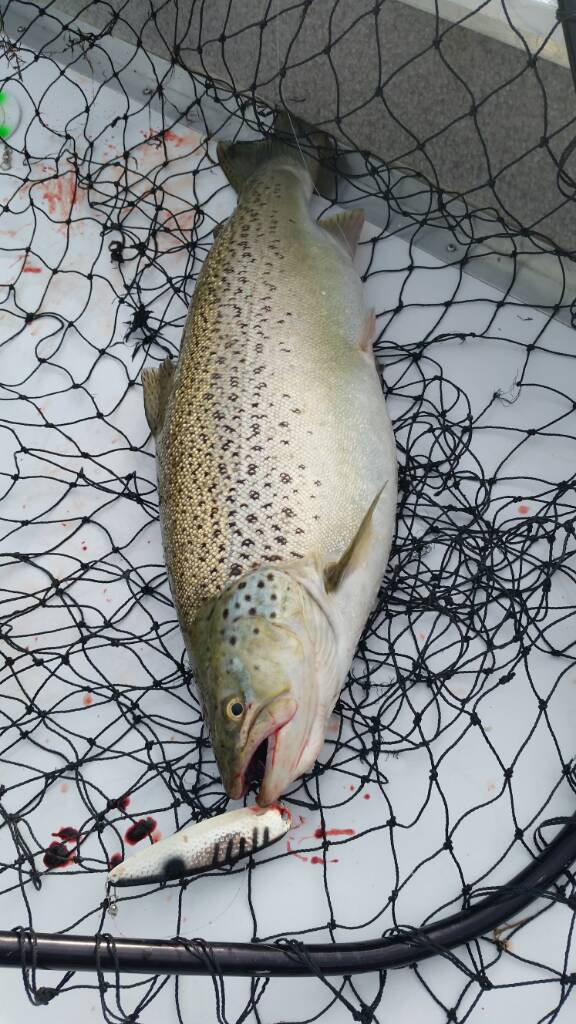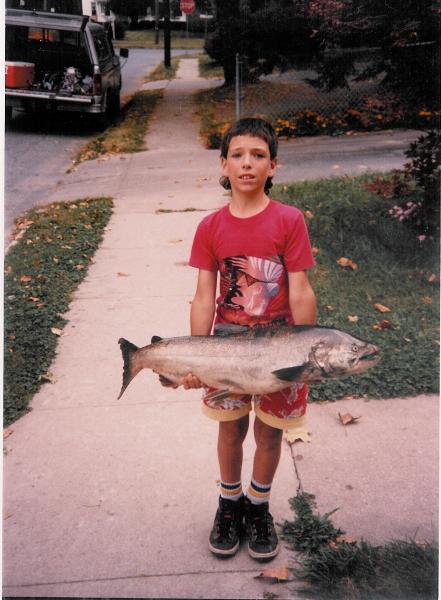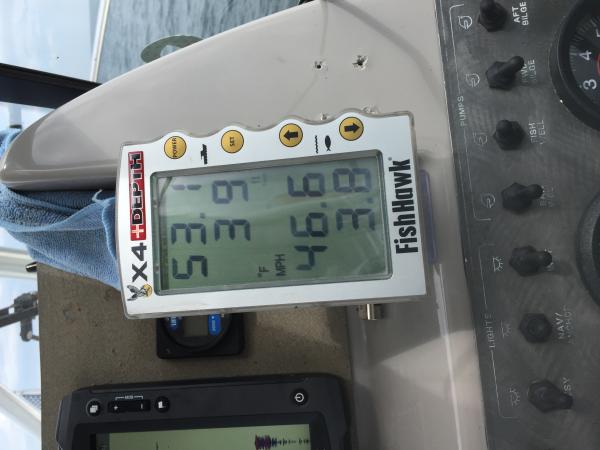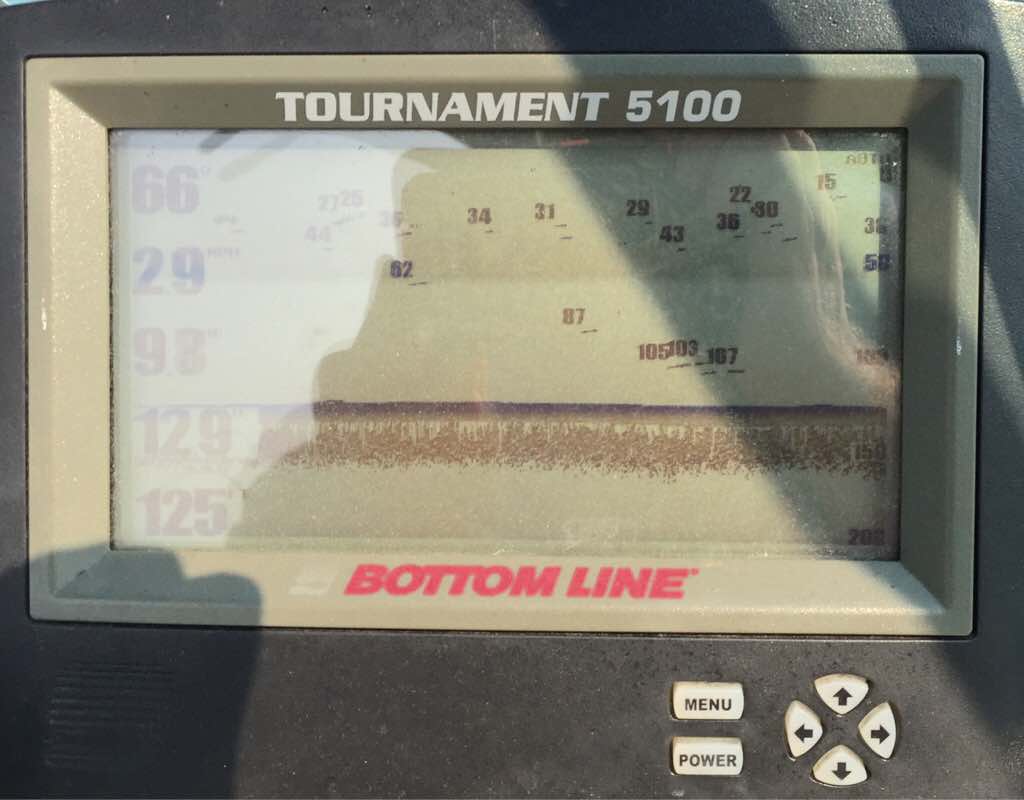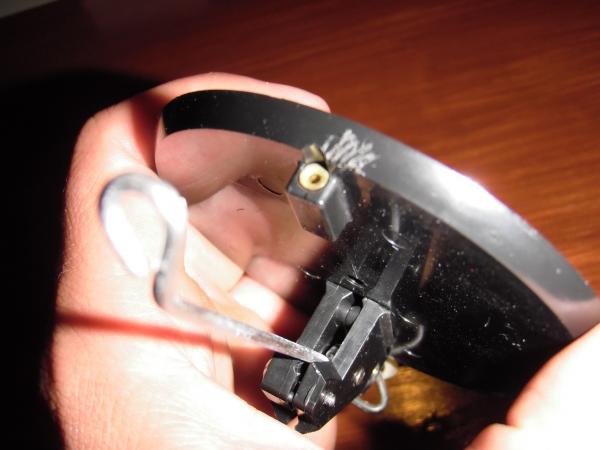-
Posts
6,907 -
Joined
-
Last visited
Content Type
Profiles
Forums
Events
Gallery
Store
Everything posted by Gill-T
-

Lake conditions at olcott
Gill-T replied to Ddolan's topic in New York Fishing Reports - Lake Ontario (South Shore)
Refer to Olcottfishing.com and click on the Olcott Buoy icon at the top of the page. It gives real-time data on wind speed and direction. -
Copper and dipsys are set slightly different when putting out more than one per side. You want the inside dipsy deeper and shorter length back (use a mag). The outside dipsy you want further back but higher in the column (use a standard dipsy). With Copper you again want the deep line on the inside which means the longer copper segment. The shorter coppers go to the outside. Set this way when the outside line gets bit the fish will slide to inside and be above the inside line avoiding tangles.
-
Guys just download the dive chart on Bloodruntackle.com. You will find the charts in the blog section of the site. The depths of the dipsys were confirmed by a probe. I have found them accurate. As far as why fish hit a dipsy at 450' out but won't touch it at 350' out has nothing to do with depth achieved as a standard sized dipsy will pretty much stop gaining depth at 300' out. What is probably at play is distance from the boat as it relates to boat noise.
-
You have it backwards. Deep line gets a longer lead so the lure is further away from the second higher lure upon release. Make sure you have rods pointed at opposing directions on the same rigger so on release the rod tension on a bottom release will pull the released line away from upper line as the upper line still is exerting an opposite force on the cable and ball in the opposite direction (rigger rods are pulling on the cable in opposite directions). I assume you are talking about true stacking a second rod on one rigger and not cheaters right?
-
-
Unusual for this time of year to have a thermocline east of the Catt this time of year but the lake is cold this year. Steelhead can be caught near the bottom but they are true pelagic species and like to have a lot of water under them. Look at the bathymetry chart for Lake Erie and head for deep water. Barcelona has Steelhead. Put a spread of orange spoons at and above the thermocline with cheaters, dipsys, leadcore and you will catch them.
-
Thanks for posting. I have noticed a decline of birds on state land to the point I don't even cut tracks in the snow anymore. Private land numbers are down also but still huntable numbers.
-
Most of the Steelhead in Erie are caught over the deep basin. When you have the same water temp from top to bottom like you do in the summer from the Catt to Buffalo, you will not find many Steelhead.
-

SBHW Salmon Slam - August 1st, 2015
Gill-T replied to TOP SECRET's topic in Tournament Talk, Shows, Events & Seminars
-

Lucky Enuff Sodus 7/20
Gill-T replied to Fishtails's topic in New York Fishing Reports - Lake Ontario (South Shore)
-

The start of Lake Ontario's King fishery - who was there?
Gill-T replied to ReelPower's topic in Open Lake Discussion
-

Mexico July 19
Gill-T replied to Landshark's topic in New York Fishing Reports - Lake Ontario (South Shore)
. Those sized kings seem to be the norm this year. -

I believe it's time to buy new downrigger rods What Brand?
Gill-T replied to Patriot's topic in Open Lake Discussion
My arsenal is all Ugly sticks. 7' light action for downriggers (yes I use 30 lb test with them) and 10' models for dipsys. I have stepped on them, drove the tips into things etc etc and they look like new. If you step on and bend the fujii guides.....just bend them back. -

The start of Lake Ontario's King fishery - who was there?
Gill-T replied to ReelPower's topic in Open Lake Discussion
-

The start of Lake Ontario's King fishery - who was there?
Gill-T replied to ReelPower's topic in Open Lake Discussion
Fished it during the eighties. Water was a completely different color. Inshore it was mostly brown. Lots of bright Rebel Stickbaits, Canadian Wigglers, J-plugs, Northport and Southport Nailer spoons, Alpena Diamonds, Bright colored orange and yellow Dodger and squid or flys. Junk lines were not being used yet. Some early dipsy diver usage. Mostly downriggers were to delivery device.....as many as you can place and run off a transom. Stacking downrigger lines and cheaters got more baits in the water. We used to run four downriggers, each with an additional stacked rod for a 8 rod spread on 19' Chapparal. The fish were big. Fishermen would not blink at the weights on the current LOC board. Bait was everywhere. During the pier season Kings and browns would be crashing bait next to the pier. Pier fishing was shoulder to shoulder where you had to cast perfectly straight out or you caught someones line. The runs were huge by comparison as the number of salmon stocked was double of that today. Snagging was in full force and was a spectacle to watch. Salmon lined the banks. -
A lot of Lake Erie guys are using Tadpole inline weights. You can find them at FishUSA.com.
-
Lakers 1.7-2 mph would be ideal, Browns 1.7mph along shore in spring to 2-2.25 mph later, Kings 2-2.25 mph typical, Steelhead 2.25-2.8 mph so it kind of depends what I am targeting. A good all around down-speed for me is 2.25 mph on Moor Subtroll. Other factors are the spoons I am running. The thinner the blank.....the slower the optimum working speed.
-
Mid September your best bet for numbers would be Oswego or Salmon river and the Charters that service those areas. Maybe late in the game to find an unbooked Captain but there are always cancelations.
-

Fluorocarbon and flashers
Gill-T replied to GeckoGuy's topic in Questions About Trout & Salmon Trolling?
30 lb main line mono for flashers. 30 lb mono line leadered down to 15lb mono in spring or 20lb mono the rest of the year. When running flashers deep on the riggers I add a barrel swivel 5' ahead of the flasher to reduce line twists further......this also allows you to add a spoon cheater above and acts like a stop when the cheater slides down the line on a release reducing tangles. -
Use your GPS and trace your course to mark the drop. Start at the Canadian border and turn east when you hit 90' of depth (don't put rods out to distract you). You are at the rim of the drop off. Troll E/NE towards the red can buoy while maintaining a constant reading of around 90'. The red can denotes the location where the the Niagara Bar comes to a point. Troll past/around the red can buoy for another 3-5 miles and then save the trail on your GPS when finished. The drop off trail should now appear on your graph every time you turn it on and will help you identify the feature and reduce the stress of possibly loosing your gear if you were to run up on the structure. Do the same thing to the East rim of the trench hole at the mouth near the fort. Start even with the fort and trace the East edge of the hole at the 30' level. As you get close to the green can buoy start to head more on a NW/W heading and end at the Canadian border.
-
Yes there are browns ON the bar. The challenge of the bar is there is it is such a large area to cover. Trolling shoreline contours you can identify a depth where fish are and just stitch a trolling line parallel to the shore to stay in the hot zone. Browns can be anywhere on the bar from 30' out to the drop at 90'. The nice thing about your home Niagara water is that if you want kings, there are ALWAYS kings on the drop. At certain times of year the area may be swarming with little shaker kings but there are always fish on that piece of structure. Larger Kings make early evening movements from deeper water to the drop-off to feed each night. Out past 250' you will get into a steelhead bite. Living in Lewiston you are close to one of the greatest stretch of water in the world.....the Niagara Bar. My suggestions is to save on gas money and spend the majority of time learning your home water.
-
-
There are browns all along the south shore. From Lewiston, put in at Wilson and troll towards the Niagara using the methods discussed above. Also, NOBODY targets browns on top of the bar before the drop off. There is warm Niagara water there with bait and no boats!
-


